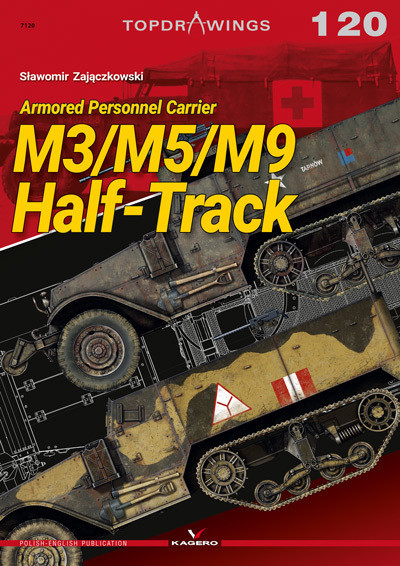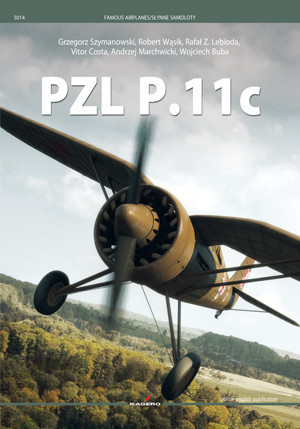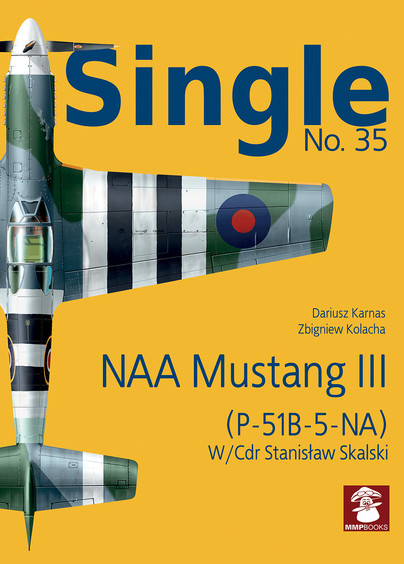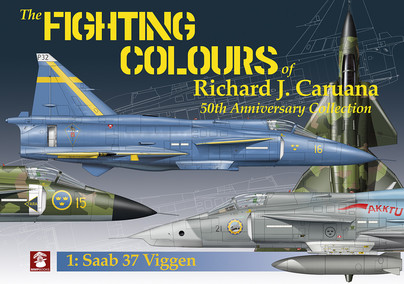
Format: Paperback
Pages: 288
ISBN: 9781636240886
Pub Date: 15 Dec 2021
Description:
Phillip Parotti's new novel offers fast-paced action in the skies over the Sinai desert in 1916. Lieutenant Devlin Collins, an Irish-American flier in the Royal Flying Corps, expecting to fly on the Western Front, instead finds himself flying antiquated two-seater bomber and photo reconnaissance missions over the Egyptian desert against the forces of the Central Powers which are trying to capture the Suez Canal. Pitted against German machines which are up-to-date and well equipped, the men of the RFC fight at a considerable disadvantage as they go forth to meet their enemy, but committed to their cause and with aggressive spirit, no matter how great the stress of battle, they proceed and prevail, continually forcing the Turks and Germans back as the army moves slowly toward Palestine.
Constantly endangered by superior German machines, facing incessant ground fire during their bombing and strafing attacks, Dev and his fellow pilot Crisp drive home their attacks with unremitting determination. In the off hours from combat, Dev discovers that he has a particular talent for planning his flight's air raids. This talent manifests itself completely in the campaign's culminating attack on the German redoubts at the battle of Magdhaba, an attack so successful that when the pilots are finally pulled back for a rest after a year of fighting, Dev is promoted and invited onto the staff at GHQ is order to apply his expertise to air planning as the army moves on Gaza with the intention of driving into Palestine.

Format: Hardback
Pages: 192
ISBN: 9781636240909
Pub Date: 10 Dec 2021
Series: Casemate Illustrated Special
Illustrations: 150 photographs and illustration
Description:
This book provides an overview of the victory markings painted on the fins and rudders of the planes of the German day fighter and night fighter aircraft between 1939 and 1945, and demonstrates how these were applied in reality through the profiles of nineteen pilots, including some of the most emblematic pilots of the Luftwaffe: Hans Troitzsch, Johannes Gentzen, Frank Liesendahl, Wilhelm Balthasar, Otto Bertram, Joachim Müncheberg, Karl-Heinz Koch, Kurt “Kuddel” Ubben, Felix-Maria Brandis, "Fiffi" Stahlschmidt, Franz-Josef Beerenbrock, Heinrich Setz, Walter "Gulle" Oesau, Max-Hellmuth Ostermann, Heinrich Bartels, "Fritz" Dinger, Martin Drewes, Egmont zur Lippe-Weissenfeld and Ludwig Meister.

Format: Paperback
Pages: 256
ISBN: 9781950394074
Pub Date: 10 Dec 2021
Illustrations: colour maps, photos and tables
Description:
Since the early 1950s, the heavily industrialised nation of South Korea has seen steady growth and is now the world's seventh-largest exporter and 11th-largest economy overall. As the Cold War on the Korean peninsula gathered momentum, the development of the Republic of Korea Air Force became one of the nation’s top priorities. While initially dependent on the United States for its aircraft, Korea’s aviation industry has matured rapidly, and the ROKAF’s use of indigenously manufactured equipment is on the rise.
Modern South Korean Air Power provides a detailed look at the aircraft and armament, as well as the organisation and the modernisation process of the ROKAF. The air arm has invested heavily in its early warning and intelligence-gathering capability to guard against the unpredictability of its northern neighbour. A territorial dispute with long-standing rival Japan, as well as incursions into its airspace by both China and Russia, have fuelled the need to transform the ROKAF into a technologically superior force. In its ongoing efforts to maintain its edge, the ROKAF has introduced fifth-generation stealth fighters while at the same time still making effective use of obsolete biplanes. It is this wide variety of aircraft and helicopters that make this air arm one of a kind. This book is a highly informative and richly illustrated source of reference and documents the ROKAF in a previously unavailable degree of detail. It provides an insightful and in-depth look at the journey the service has embarked upon to face the regional security challenges of tomorrow.

Format: Hardback
Pages: 184
ISBN: 9781950394050
Pub Date: 10 Dec 2021
Series: Strategic Handbooks
Illustrations: colour maps, photos and tables
Description:
The field of unmanned combat aerial vehicles (UCAVs) is rapidly diversifying as an array of light, midsized, and heavy UCAVs and munitions enter the global marketplace. This has the potential to dramatically expand access to armed unmanned platforms and change the way unmanned aerial vehicles are used in combat. The influence of UCAVs on the conduct of war has already been felt in conflicts in the Caucasus, the Middle East and North Africa, where state and non-state actors have fielded a dizzying number of UCAVs from around the world.
At the same time, advanced militaries are beginning to equip UCAVs with increasingly sophisticated munitions, some of which are heavier and can fly farther than the types of weapons used by UCAVs in the past. In Unmanned Combat Aerial Vehicles: Aircraft, Ordnance and Operations, a Strategic Handbook from Harpia Publishing, Gettinger presents an essential guide to the world of armed unmanned aircraft. It features profiles of every UCAV currently in active military service or under development, as well as other UAVs that could potentially be armed in the future. By parsing publicly available information and data, Gettinger offers a detailed timeline of the design and use of these armed UAVs. This Strategic Handbook includes, for the first time, a discerning and comprehensive study of UCAV munitions, offering readers a unique perspective into a segment of the UCAV market that portends an expansive combat role for unmanned combat aircraft long into the future.

Format: Paperback
Pages: 160
ISBN: 9788366673670
Pub Date: 01 Dec 2021
Series: Connoisseur's Books
Illustrations: 292 archival photos, color profiles
Description:
In this book, I would like to introduce to our readers the first major campaign of the Royal Hungarian Army fought against the Red Army in Ukraine from July until November of 1941. The Barbarossa campaign started 80 years ago, on 22 June 1941, pitting the forces of the Soviet Union against those of the Third Reich and its allies. Hungary was among the less willing allies who participated on the side of the Germans.
On strategically level the Hungarian involvement during the first phase of the war against the Soviet Union was minimal. On the other hand, the Hungarian committed their most modern, partially motorized units; the Mobile Corps and the elite mountain jagers and border guard troops of the VIII Corps and the selected units of the Royal Hungarian Air Force. Through this lavishly illustrated book I wanted to show you what war meant for ordinary soldiers, civilians from the Hungarian perspective in 1941.

Format: Paperback
Pages: 20
ISBN: 9788366673632
Pub Date: 01 Dec 2021
Series: Top Drawings
Illustrations: drawing sheets, color profiles
Description:
The M3 vehicle was a thirteen-person armoured transporter that could be used to transport mechanized infantry or as an artillery tractor, ambulance, communications vehicle, etc. It was also used as a carrier for various types of guns.American factories producing M2 and M3 armoured personnel carriers were overloaded and could hardly meet orders for the army.
That’s why, in 1942, the International Harvester Company stated that it was capable of producing a combat vehicle similar to the M3, but due to some differences in the plant's machine park, not all components could be made in the same way. Therefore, it required slight changes in the design of the new transporter. Thus the Half-Track Personnel Carrier M5 was born, which was almost identical to the M3 version. The M5 versions were created primarily for the needs of foreign customers. They were used by the British Army, as well as Polish, Czech and "Free French" units. The British used them primarily to tow various types of anti-tank guns. These vehicles also found their way to the USSR under the Lend-Lease agreement. After the Second World War, they were also used by the Israeli army.

Format: Paperback
Pages: 204
ISBN: 9788366673649
Pub Date: 01 Dec 2021
Series: Famous Airplanes
Illustrations: Color profiles, 504 color and archival photos, drawing sheets
Description:
If you were to ask about the symbolic aircraft of the desperate defence of Polish sky during the tragic September ’39, without any doubt the answer should be one – the PZL P.11c. Although older machines (PZL P.
7a and P.11a) fought next to it, the mentioned variant was a true backbone of the defence force. Pilots liked P.11c but in all publications it is described by an adjective “obsolete”. It was the penultimate stage in the evolution of a long line of fighter planes, no longer having the disadvantages of the “infant period”, but also actually constituting a closed alley in the evolution of this type of design. The PZL P.11g modification showed that the already mature construction can only be improved to a small extent. Being an export alternative, faster, equipped with a much more powerful engine and better armed PZL P.24 were actually the end of the possibilities of high wing strut aircraft. This was understood in Poland, where design offices were no longer involved in the further development of such structures (P.11g was just an emergency attempt to obtain not the most modern, but an efficient fighter). Unfortunately, it was not possible to produce or buy a successor abroad on time. That is why Poland entered the conflict equipped with fighter planes, once belonging to the world leaders, but giving way to the latest enemy machines.

Format: Paperback
Pages: 172
ISBN: 9788366673663
Pub Date: 01 Dec 2021
Series: Connoisseur's Books
Illustrations: 210 archival photos, color profiles, drawings
Description:
His book "Soviet Heavy Fighters 1926 - 1949" was written mainly to showcase some of the lesser known, often forgotten, aircraft types, as well as a group of young and prolific aircraft designers who never had a chance to flourish under difficult wartime conditions and limitations inherent to the Soviet aviation industry of the time. Many of the aircraft designs discussed in the book never went into full-scale productions, others didn't progress beyond the prototype stage and some were complete failures. Nonetheless, quite a few of them featured interesting and innovative design solutions.
Hopefully, this comprehensive book will serve the purpose of shedding light on some of the lesser known episodes in the history of Soviet aviation and save them from falling into obscurity.

Format: Paperback
Pages: 96
ISBN: 9788366549456
Pub Date: 29 Oct 2021
Series: Polish Wings
Illustrations: 200 photos, 30 color profiles
Description:
The book describes service of famous Avro Lancaster I/III bombers used by Polish pilots in Britain during 1941-1945.The book has includes 200 photographs (many of which have not been published before) and 30 color profiles (plus top and bottom views of representative aircraft).

Format: Paperback
Pages: 24
ISBN: 9788366549517
Pub Date: 29 Oct 2021
Series: Single
Illustrations: photos, color profiles
Description:
This book compiles 4-view color profiles, scale plans, and photo details of the single variant of the NAA Mustang III, (P-51B-5-NA). Scale plans in 1/72 and 1/48 scales plus drawings from wartime technical manuals. Also includes photos of the details in B&W and color.

Format: Hardback
Pages: 264
ISBN: 9788365281784
Pub Date: 29 Oct 2021
Series: White Series
Illustrations: 300 B&W and color images
Description:
This book describes in detail the camouflage and markings of the day fighters used by the Polish Air Force from 1939 to 1947. Aircraft of Polish, French, British, American, Soviet, and German origin are shown. The writing team includes the well-known quartet of distinguished Polish aviation historians: Kopanski, Belcarz, Gretzyngier, and Matusiak.
The illustrators are Artur Juszczak, Karolina Holda, Robert Gretzyngier, and Robert Grudzien. This profusely illustrated book includes many historical photographs and color profiles showing the colors and markings carried by the aircraft. Detailed color notes and precise description and illustration of national markings over the period complete a book that will be invaluable to aircraft enthusiasts, historians, and modelers.

Format: Paperback
Pages: 24
ISBN: 9788366549418
Pub Date: 29 Oct 2021
Series: Scale Plans
Illustrations: Scale plans
Description:
Scale plans in 1/32, 1/48, and 1/72 of the Polish RWD-8 aircraft.8 A3 size scale plans of RWD-8 versions.

Format: Paperback
Pages: 40
ISBN: 9788366549463
Pub Date: 29 Oct 2021
Illustrations: photos and 40+ color profiles
Description:
Internationally renowned aviation artist and historian Richard J. Caruana provides a tribute to an often under-appreciated aviation legend, the Saab 37 Viggen, an aircraft that was ahead of its time on many fronts.Richard's book provides a brief history of the aircraft combined with an exceptional collection of over 56 color profiles showing schemes worn by Viggens operationally, as well as the special celebratory schemes that became so familiar towards the end of its career.
Each profile is accompanied by a detailed caption and a brief operational history.A page of detailed scale drawings illustrates and explains the different versions of the Viggen and another page illustrates unit markings worn by the type as illustrated in the profiles of the book.

Format: Paperback
Pages: 24
ISBN: 9788366549241
Pub Date: 29 Oct 2021
Series: Single
Illustrations: Scale plans, color profiles, B&W photos, color photos
Description:
This book compiles the 4-view color profiles, scale plans, and photo details of the single variant of the Yakovlev Yak-9P. Scale plans in 1/72 and 1/48 scales plus drawings from wartime technical manuals. Also included are photos of the details in B&W and color.

Format: Paperback
Pages: 336
ISBN: 9788366673618
Pub Date: 01 Sep 2021
Series: Connoisseur's Books
Illustrations: 583 archival photos, drawing sheets, 26 color profiles
Description:
Following World War I, the need arose to renew the aging air force of the Kingdom of Serbs, Croats and Slovenes (KSHS - Kraljevina Srba, Hrvata i Slovenaca) which consisted mostly of obsolete war relics. The Kingdom approached the Dornier factory having recognized its reputation for quality instead of going exclusively to its traditional ally, France. Of course, wartime reparation payments played a role in this decision, however this is not to detract from the fact that at the time airplanes which the Kingdom expressed interest in and eventually purchased from Dornier, had no equivalents.
From 1926 when Do D was first introduced in the Naval Air Force (PV - Pomorsko Vazduhoplovstvo), various Dornier airplanes and floatplanes served with distinction and outlasted numerous changes in politics, names of countries, borders, flags, kings, dictators and presidents. Three of those, Do 17K, Do 22 and Do Wal, took part in the brief 1941 April war opposing the German Reich who itself fielded Do 17 bombers in its ruthless attacks against the Yugoslav capital, Belgrade. After over 90 years of distinguished service, the retirement of Dornier Do 28D-2 brings the closure to the magnificent and without precedent Dornier Saga in the western Balkans. Even 50 years after the passing of great Claude Dornier, his brand of airplanes is still leaving a lasting mark in the world as well as Yugoslav and Serbian aviation history.

Format: Paperback
Pages: 20
ISBN: 9788366673595
Pub Date: 01 Sep 2021
Series: Top Drawings
Illustrations: drawing sheets, color profiles
Description:
Junkers Ju 188 - German bomber during World War II, successor of the Ju 88) was flown in January 1943. In February 1943, production lines launched three Ju 188E-0 planes powered by BMW 801ML engines. The first seven serial Ju 188E-1s received the BMW 801C-2 engines.
Airplanes powered by Junkers Jumo in-line engines were to be marked A, B, C and D, while those powered by BMW, F, G and H radial engines. The identification variant of the E-1 version was the Ju 188F-1, equipped with two cameras.

















